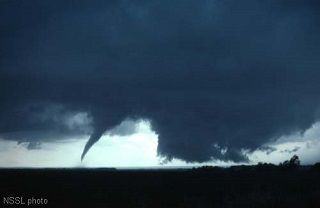From Guest Blogger Hannah Whittenly: Exploring Climate Change — Common Natural Disasters that Weren’t Common 50 Years Ago

According to the Office of US Foreign Disaster Assistance, any event is considered to be a natural disaster if it kills at least 10 people, or more than 100 people are evacuated, left homeless, or injured. More unusual events are reported every year.
Evidence for the increase not only exists in scientific journals, but also in the insurance industry. According to A. Clark Roofing & Siding Ltd, insurance agencies have been forced to boost their rates steadily over the last decade due to the increase of natural disasters and extreme weather. The truth is that weather is affecting us more today than it affected our parents and grandparents.
Here are some natural disasters not so common 50 years ago:
Flooding in Non-Flood Plains
Climate change is responsible for the weather patterns changing at an alarming rate. It’s also responsible for sea levels rising. As a result, areas along the coast that are low-lying are more susceptible to flooding. Another reason for flooding is that due to extensive building there isn’t enough soil to absorb excess water, and flooding results.
More Powerful Hurricanes
Hurricane Katrina and Superstorm Sandy were more powerful than storms in recent memory, killed hundreds of people, and caused massive damage. The more powerful storms are due to global warming. The increase in the earth’s temperature is causing more violent and intense storms. El Niño and La Niña temperatures that occur in warmer waters are partially responsible for the intensity of the storms.
Serious Landslides
The Huffington Post has reported that deforestation and overgrazing on hillsides has eroded the land so much that landslides, especially after a heavy rainfall, are becoming much more common. Areas that are more prone to serious flooding are also more likely to experience landslides.
Earthquakes and Fracking
A science publication has released a story about the possible link between an increase in earthquakes and fracking. Huge amounts of wastewater from gas and oil drilling operations seep into fault lines during fracking operations and may cause earthquakes. The announcement was made by the University of Colorado.
Tornado Intensity
A researcher at Florida State University is studying the correlation between climate change and the intensity of tornadoes. These deadly storms have always caused massive amounts of damage and loss of life, but the strength of tornadoes forming today are more powerful than they were 50 years ago.
Most of the more recent natural disasters are hydro-meteorological. They include floods, hurricanes, tsunamis, droughts, and typhoons. These natural events have been increasing steadily for more than 25 years, and have been the cause for more damage than geologic occurrences such as avalanches, earthquakes, landslides and volcanoes.
